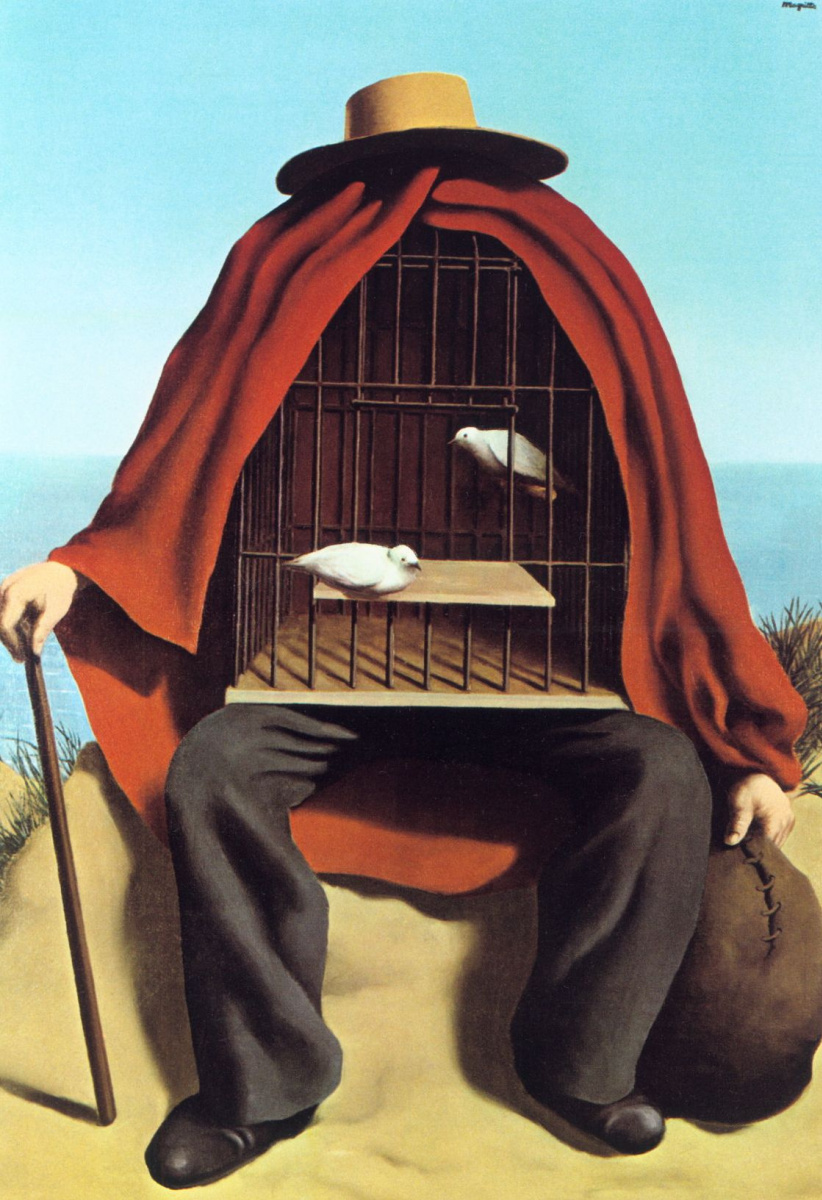log in
Enter site
Login to use Arthive functionality to the maximum
The therapist
René Magritte • Painting, 1937, 47.6×31.3 cm
Description of the artwork «The therapist»
In 1927, the first personal exhibition of René Magritte took place in Brussels. Most of the canvases the artist presented there were executed in the Cubist style, as well as his first surreal experiments. Art critics took Magritte’s work very coolly, and the frustrated artist, along with his wife, went to conquer Paris. In the capital of European art, the artist met André Breton and became a member of his Surrealist circle. Despite the long-awaited recognition of his talent, Magritte’s relationship with colleagues was far from ideal. Other artists were outraged by his homebody and not bohemian lifestyle, and Magritte, in turn, scolded and ridiculed the surrealist addiction to psychoanalysis and the Freud’s works. One of such ridicules was The Therapist painting of 1937.
Magritte did not want to put up with the fact that each of his paintings became the subject of discussion among colleagues, not so much because of its artistic value, but because of the attempts to analyse the artist’s personality. He believed that the people who primarily needed therapy were the psychotherapists themselves (by the way, in the modern world, supervision is a prerequisite for psychotherapeutic practice). The subject of his painting is an excellent illustration of this statement.
Magritte portrayed his “therapist” as a certain wanderer in a wide-brimmed hat, with a crook and a shoulder bag, who is sitting on the edge of a sea cliff. Like many other Magritte’s subjects, he does not have a face, but he opens his cloak wide open, as if allowing the viewer to look into his soul for a moment, opening the veil of his own secret. Hidden under the cloak is a cage with two white doves: one bird inside, behind the closed door, and the other outside. One gets the impression that the free pigeon is trying to communicate with its fellow who is imprisoned in a cage, to support him, to help him get free. So does the therapist helping his clients get out of the dark and lonely place that is within them. Surprisingly, despite his dislike for psychotherapists, Magritte managed to portray the principle of their work very subtly.
Author: Yevheniia Sidelnikova
Magritte did not want to put up with the fact that each of his paintings became the subject of discussion among colleagues, not so much because of its artistic value, but because of the attempts to analyse the artist’s personality. He believed that the people who primarily needed therapy were the psychotherapists themselves (by the way, in the modern world, supervision is a prerequisite for psychotherapeutic practice). The subject of his painting is an excellent illustration of this statement.
Magritte portrayed his “therapist” as a certain wanderer in a wide-brimmed hat, with a crook and a shoulder bag, who is sitting on the edge of a sea cliff. Like many other Magritte’s subjects, he does not have a face, but he opens his cloak wide open, as if allowing the viewer to look into his soul for a moment, opening the veil of his own secret. Hidden under the cloak is a cage with two white doves: one bird inside, behind the closed door, and the other outside. One gets the impression that the free pigeon is trying to communicate with its fellow who is imprisoned in a cage, to support him, to help him get free. So does the therapist helping his clients get out of the dark and lonely place that is within them. Surprisingly, despite his dislike for psychotherapists, Magritte managed to portray the principle of their work very subtly.
Author: Yevheniia Sidelnikova



So even the plot becomes more interesting)